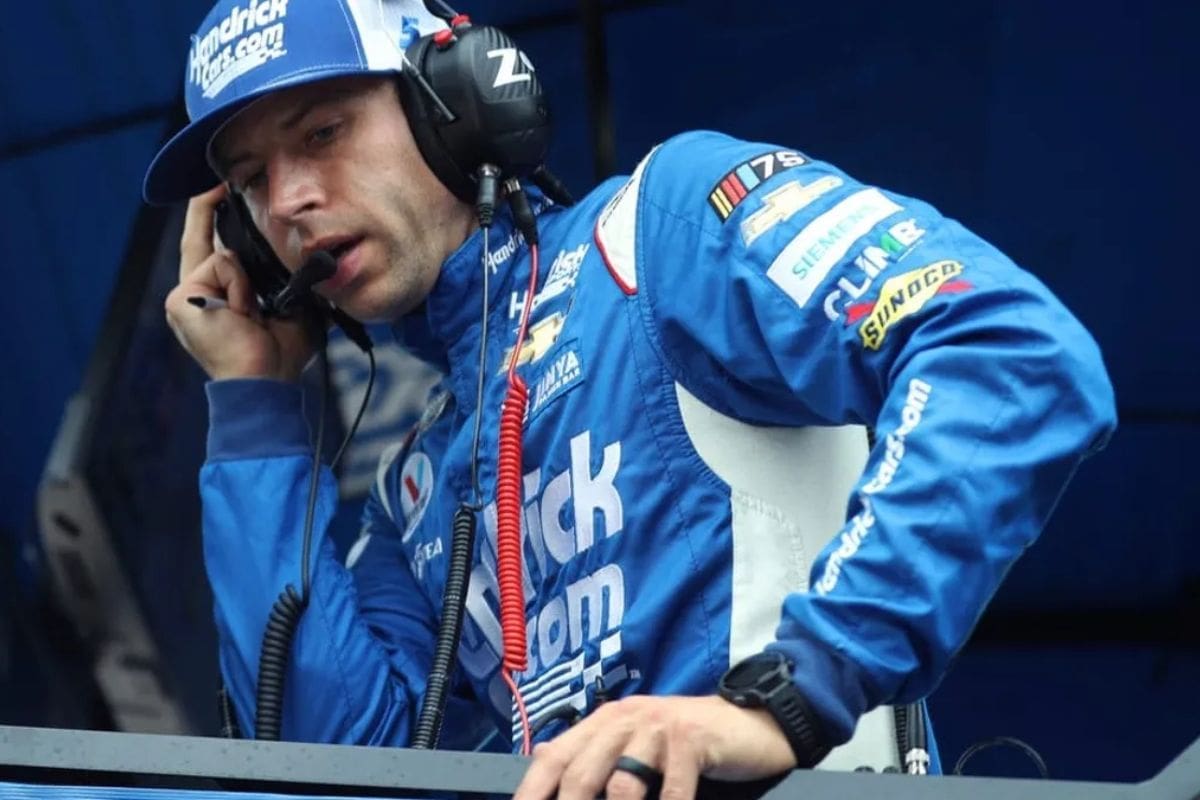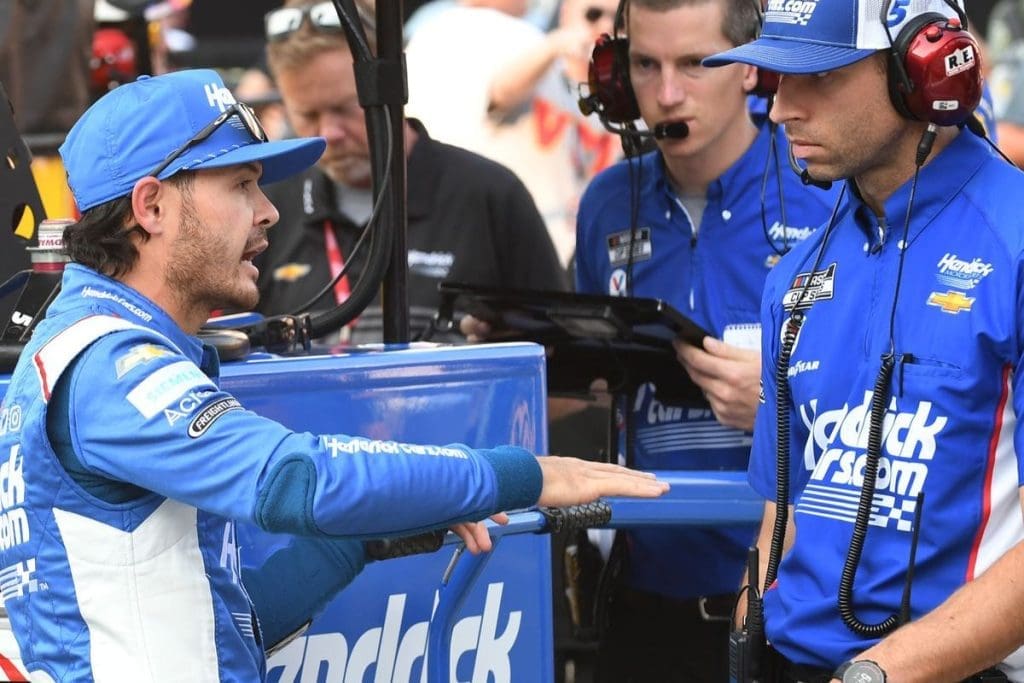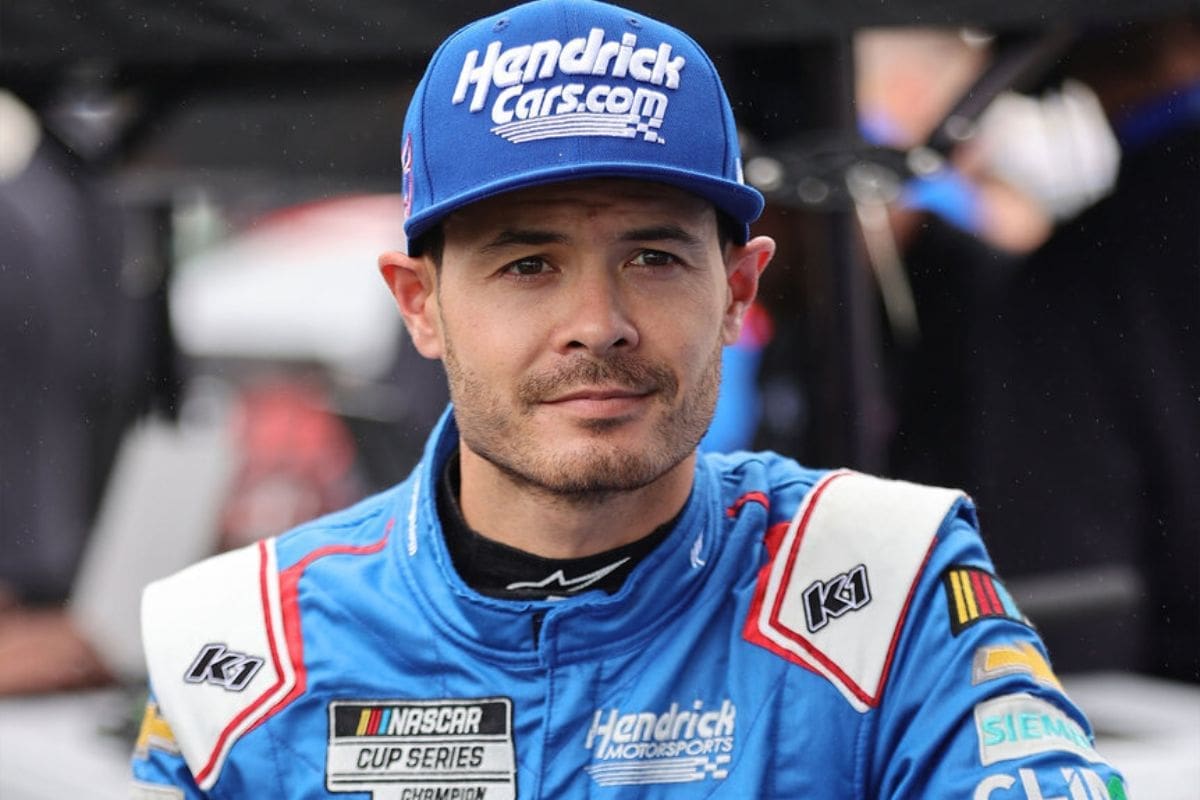Cliff Daniels on Secrets Behind Kyle Larson’s Victory: Cliff Daniels has articulated a compelling narrative for Kyle Larson‘s win at Brickyard 400, highlighting Larson’s proven adaptability and stellar performance history at Indianapolis Motor Speedway. Daniels’ insights emphasize the critical role of late-race strategies and the necessity for precise communication within the team to navigate the complexities of the event.
Key Highlights
- Late-race cautions played a critical role, allowing Larson’s team to refine their strategy and car setup.
- Effective fuel and tire management strategies were essential for maintaining competitive performance during crucial moments.
- Close gaps between cars created advantageous accordion effects, enabling Larson to capitalize on fresh tires.
- Larson’s driving skill, combined with precise team communication, ensured strategic execution during the race.
- Key car adjustments improved performance in traffic, allowing Larson to navigate and overtake competitors efficiently.
Cliff Daniels Discusses Brickyard 400 Victory
In a recent episode of the Dale Jr. Download, Cliff Daniels illuminated the essential factors that contributed to Kyle Larson’s success at the Brickyard 400, emphasizing how tactical late-race cautions played a vital role in securing the win for the No. 5 team. Daniels articulated that while Larson’s car was consistently the fastest on the track throughout the final stage, the calculated timing of the cautions allowed them to capitalize on their performance at key moments.
The late-race cautions effectively reset the competitive landscape, enabling the No. 5 team to refine their strategy and make important adjustments to the car’s setup. Daniels noted that these cautions not only provided Larson with the opportunity to close the gap between him and his competitors but also allowed the team to optimize tire management and fuel strategy, ensuring they remained a formidable force during the concluding laps.
Moreover, Daniels highlighted the importance of situational awareness in these moments, as the crew had to balance aggression with caution, weighing the risks of pushing for position against the potential for losing valuable track position. The ability to navigate these dynamics is a hallmark of championship-caliber teams.
Larson’s victory at the Brickyard 400 exemplifies the intricate interplay between driver skill, vehicle performance, and tactical insight in NASCAR. Daniels’ insights reveal not only the tactical elements that led to success but also serve as a reminder of the unpredictable nature of racing, where every decision can dramatically alter the outcome.
Earnhardt Jr.’s Question About Confidence Level
Dale Earnhardt Jr.’s inquiry into Kyle Larson’s confidence during the race highlights the intricate dynamics of strategy and performance in NASCAR events, particularly regarding the balance between aggression and caution amid varying fuel strategies among competitors. Earnhardt’s question reflects a deep understanding of the psychological and tactical elements that drivers must navigate. As Larson faced competitors like Ryan Blaney, who were focused on fuel conservation, the need for confidence in his ability to push forward was crucial.
“As the race was playing out, it looked like, even though you know, [Ryan] Blaney was relatively quick, you guys, you know we’re able to be more aggressive because of your situation with fuel, some of the cars we’re trying to save to make it to the end, Blaney one of them.”
“I don’t know, I mean, where was your confidence level, that you could just drive up there without the yellows and take this lead and win this race?” – jr
Understanding the interplay of speed and strategy is vital in NASCAR. Larson’s confidence level was likely influenced by several factors, including track position, tire wear, and the relative performance of his car compared to others.
The ability to drive aggressively without the safety net of cautions adds a layer of complexity to Larson’s decision-making. Earnhardt’s probing question emphasizes the necessity for drivers to maintain a delicate balance between seizing opportunities and recognizing the limitations imposed by their competitors’ strategies.
Daniels on the Impact of Late Cautions
The discussion surrounding Kyle Larson’s performance at the Brickyard 400 naturally extends to the noteworthy role that late cautions played in shaping the race outcome, as highlighted by Daniels’ open assessment of their impact on strategy and confidence.
Daniels did not shy away from acknowledging that, without these late race interruptions, their likelihood of securing a win would have greatly decreased. He straightforwardly expressed a confidence level of “one out of ten” regarding winning without the late cautions, emphasizing their importance.
“One out of 10. Just being honest, I think we, and maybe I’ll just speak for myself, I think I underestimated how much those guys were going to have to save fuel, you know, knowing that they were going to be more than just a lap short.” – Daniels
In analyzing the influence of these cautions, several key points emerge:
- Fuel Strategy: Late cautions allowed teams to reassess their fuel strategies, potentially shifting from a conservation approach to a more aggressive race pace.
- Tire Management: The interruptions provided opportunities for teams to optimize tire wear, ensuring better grip and performance in the closing laps.
- Psychological Edge: The cautions contributed to a renewed sense of confidence among the team, allowing them to recalibrate their approach and tactics.
- Field Position: Late race restarts can greatly alter track position, offering teams a chance to capitalize on competitors’ mistakes or miscalculations.
Ultimately, it is clear that the late cautions were not merely incidental but rather essential elements that shaped the race dynamics, reinforcing Daniels’ assertion that they were vital for Larson’s success.
Insights on Fuel Saving and Car Adjustments
Fuel-saving strategies during the Brickyard 400 revealed intricate dynamics among drivers, as the tightly maintained gaps between cars created an accordion effect that played to Kyle Larson‘s advantage in utilizing fresh tires effectively. This phenomenon of spacing, where drivers conserved fuel by maintaining close proximity to their competitors, inadvertently improved Larson’s ability to generate momentum and execute bold maneuvers during vital moments.
“One thing that I thought was really interesting, and I’m sure you saw this play out, when they were all saving fuel, they were keeping their gaps to the cars around them pretty tight, which almost allowed for this little bit of accordion effect, and the accordion is what helps Kyle do such a good job of building runs. Of course, at the time, we had fresh tires, we had the fuel, so we didn’t need to take anything into consideration, as far as our level of aggression.”
“And so, when guys that were saving fuel were blocking us, like they should, in doing that, they were actually further tightening the gaps, you know, to the cars around them, which would create more of an accordion, and it just kept giving us a window. You know, like Kyle described it, to kind of throw some bombs on entry, and get spotters to call out the spot for us.” – Daniels
As drivers focused on fuel conservation, their reduced throttle inputs resulted in tighter gaps, amplifying the accordion-like behavior on the track. This allowed Larson, equipped with fresh tires, to capitalize on the extra speed differential. By taking advantage of the compressed field, he could launch decisive attacks at opportune moments, positioning himself to outwit those conserving fuel.
The tactical interplay between fuel saving and tire management highlighted the importance of situational awareness and adaptability in racing. Daniels noted that this scenario permitted Larson to ‘throw some bombs on entry,’ indicating a calculated risk-taking approach that optimized the potential for gaining positions.
Final Thoughts on the Victory
Kyle Larson’s victory at the Brickyard 400 not only highlighted his driving skill but also emphasized the tactical adjustments made by his team, ultimately allowing them to maneuver the complex dynamics of the race effectively. The blend of strategy and execution is essential in a sport where every moment counts, and Larson’s performance exhibited this synergy.
- Car Adjustments: The modifications made to improve the car’s handling in traffic were vital. These adjustments allowed Larson to maintain speed while dodging competitors.
- Aero Dynamics: Understanding the NextGen car’s aerodynamic properties enabled the team to optimize their strategy, mitigating tightness in traffic—a common challenge for many drivers.
- Race Strategy: Timely calls during the race, including the decision to capitalize on yellow flags, provided tactical advantages that were expertly executed.
- Driver Skill: Larson’s ability to arc out and build speed while maneuvering through the pack illustrated a deep understanding of the track and vehicle dynamics.
“So, that was really interesting to me, and we had to make a couple adjustments to our car leading up to that point, so it could turn good enough in traffic. The NextGen car, you know, typically the aero effects, somebody gets really tight in traffic. So, I was glad we had a good enough adjustment in the car, that Kyle can really kind of arc out and turn to build a run, and it was pretty wild to see the way he got through there so quickly.” – Daniels
News in Brief: Cliff Daniels on Secrets Behind Kyle Larson’s Victory
The tactical insights provided by Cliff Daniels regarding Kyle Larson’s potential for success at the Brickyard 400 emphasize the importance of adaptability and data-driven decision-making in motorsport.
With an impressive track record and emphasis on effective communication within the team, Larson’s prospects appear promising.
The anticipated role of late-race cautions and fuel management further accentuate critical factors that could influence the outcome, reinforcing the notion that preparation and planning are essential for achieving victory in this prestigious event.
ALSO READ: Cliff Daniels Dismisses Ryan Blaney’s Accusations as ‘Not Big of a Concern”



